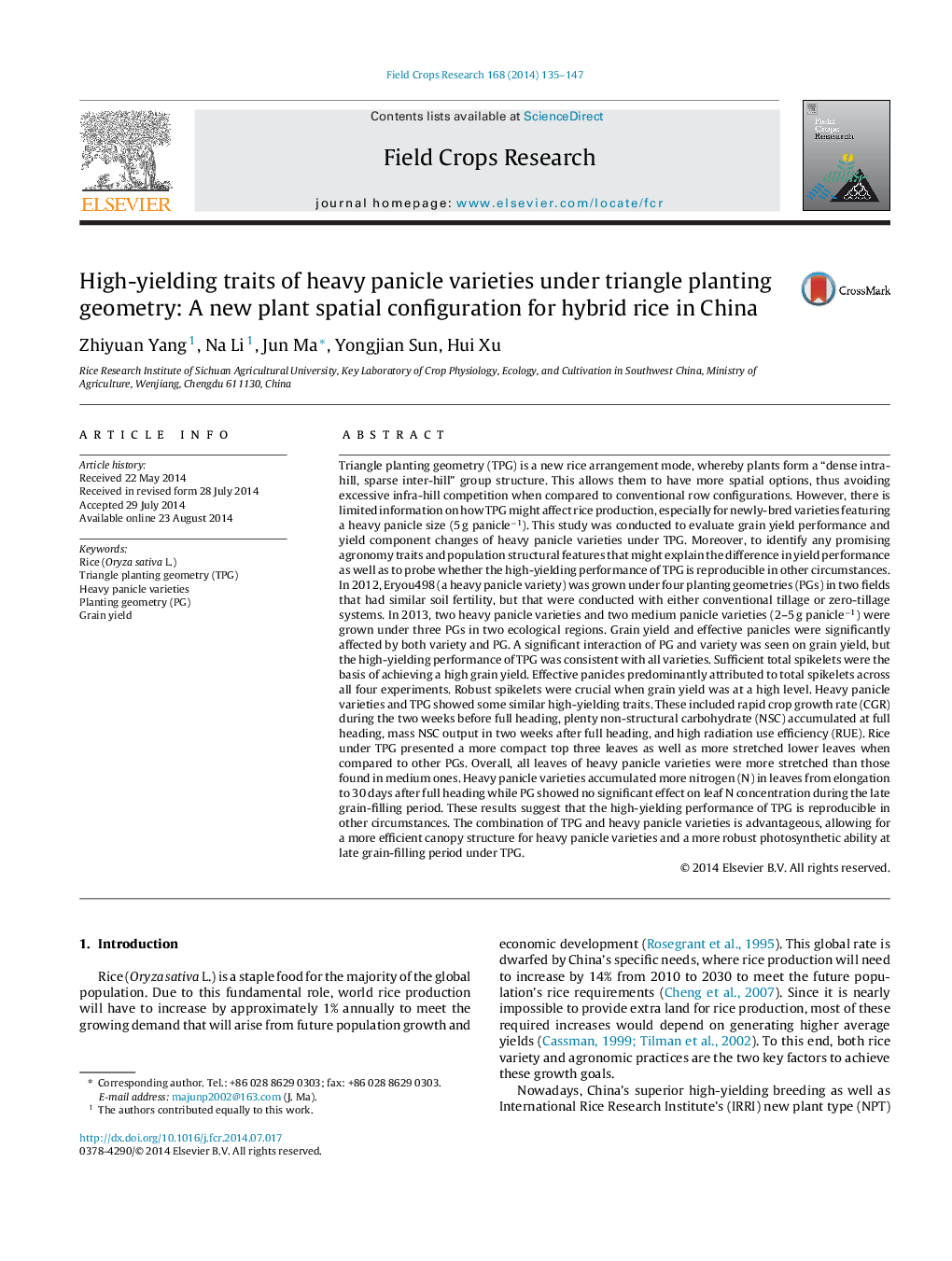| کد مقاله | کد نشریه | سال انتشار | مقاله انگلیسی | نسخه تمام متن |
|---|---|---|---|---|
| 4509978 | 1624695 | 2014 | 13 صفحه PDF | دانلود رایگان |
• Rice varieties of heavy and medium panicle type obtained higher yields under TPG.
• Sufficient total spikelets were the basis of achieving a high grain yield.
• Similar high-yielding traits were observed in CGR, NSC and RUE.
• TPG could maintain an efficient canopy structure.
Triangle planting geometry (TPG) is a new rice arrangement mode, whereby plants form a “dense intra-hill, sparse inter-hill” group structure. This allows them to have more spatial options, thus avoiding excessive infra-hill competition when compared to conventional row configurations. However, there is limited information on how TPG might affect rice production, especially for newly-bred varieties featuring a heavy panicle size (5 g panicle−1). This study was conducted to evaluate grain yield performance and yield component changes of heavy panicle varieties under TPG. Moreover, to identify any promising agronomy traits and population structural features that might explain the difference in yield performance as well as to probe whether the high-yielding performance of TPG is reproducible in other circumstances. In 2012, Eryou498 (a heavy panicle variety) was grown under four planting geometries (PGs) in two fields that had similar soil fertility, but that were conducted with either conventional tillage or zero-tillage systems. In 2013, two heavy panicle varieties and two medium panicle varieties (2–5 g panicle−1) were grown under three PGs in two ecological regions. Grain yield and effective panicles were significantly affected by both variety and PG. A significant interaction of PG and variety was seen on grain yield, but the high-yielding performance of TPG was consistent with all varieties. Sufficient total spikelets were the basis of achieving a high grain yield. Effective panicles predominantly attributed to total spikelets across all four experiments. Robust spikelets were crucial when grain yield was at a high level. Heavy panicle varieties and TPG showed some similar high-yielding traits. These included rapid crop growth rate (CGR) during the two weeks before full heading, plenty non-structural carbohydrate (NSC) accumulated at full heading, mass NSC output in two weeks after full heading, and high radiation use efficiency (RUE). Rice under TPG presented a more compact top three leaves as well as more stretched lower leaves when compared to other PGs. Overall, all leaves of heavy panicle varieties were more stretched than those found in medium ones. Heavy panicle varieties accumulated more nitrogen (N) in leaves from elongation to 30 days after full heading while PG showed no significant effect on leaf N concentration during the late grain-filling period. These results suggest that the high-yielding performance of TPG is reproducible in other circumstances. The combination of TPG and heavy panicle varieties is advantageous, allowing for a more efficient canopy structure for heavy panicle varieties and a more robust photosynthetic ability at late grain-filling period under TPG.
Journal: Field Crops Research - Volume 168, November 2014, Pages 135–147
